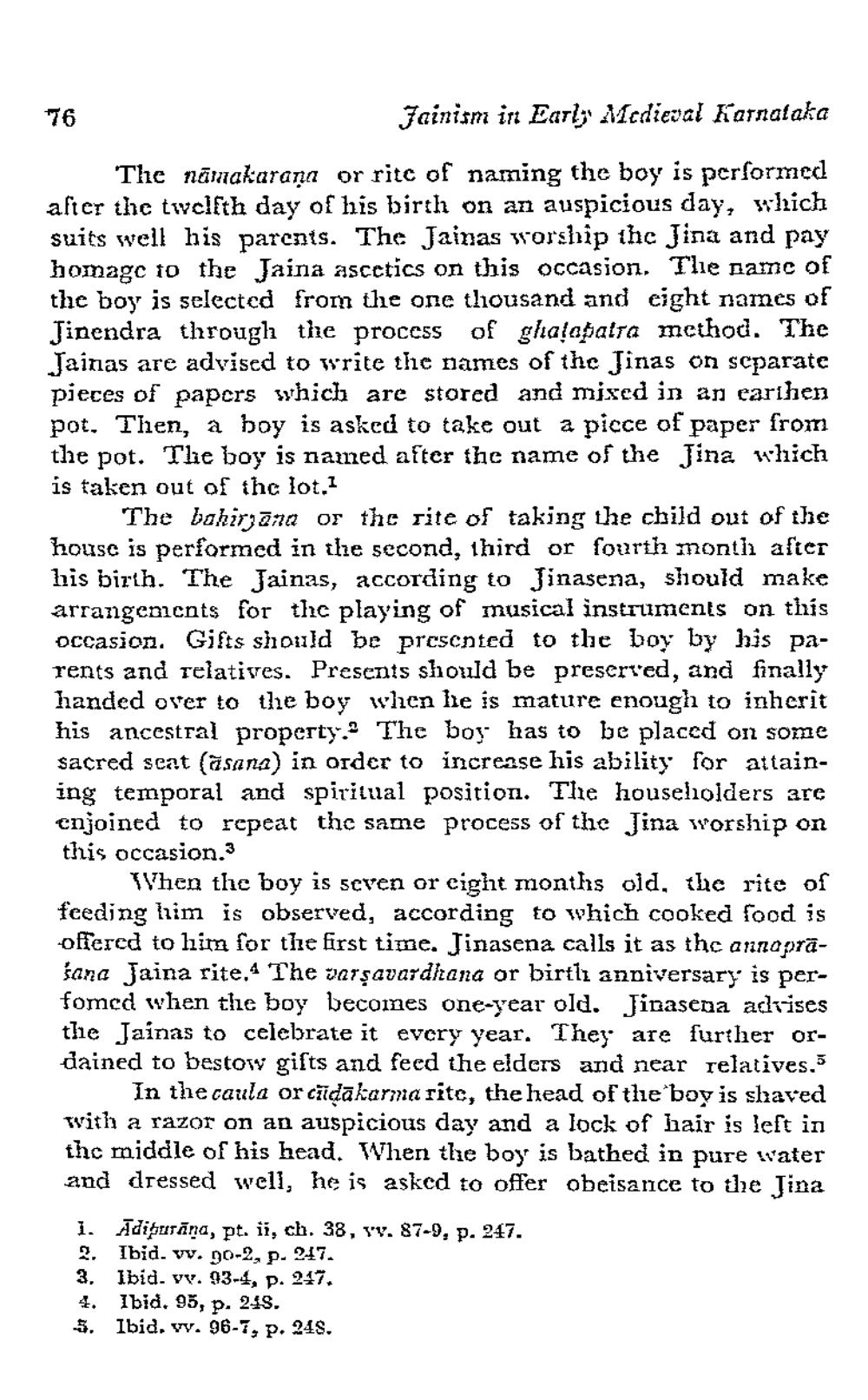________________
76
Jainism iri Early Medieval Karnataka
The nāmakarana or ritc of naming the boy is performed after the twelfth day of his birth on an auspicious day, which suits well his parents. The Jainas worship ihc Jina and pay homage to the Jaina ascetics on this occasion. Tlie pamc of the boy is selected from the one thousand and cight names of Jinendra through the process of ghalapatra method. The Jainas are advised to write the names of the Jinas on separate pieces of papers which are stored and mixed in an earthen pot. Then, a boy is asked to take out a picce of paper from the pot. The boy is named after the name of the Jina which is taken out of the lot.)
The bahiryana or the rite of taking the child out of the house is performed in the second, third or fourth month after his birth. The Jainas, according to Jinasena, should make arrangements for the playing of musical instruments on this occasion. Gifts should be presented to the boy by his parents and relatives. Presents should be preserved, and finally handed over to the boy when lie is mature enough to inherit his ancestral property. The boy has to be placed on some sacred scat (asana) in order to increase his ability for attaining temporal and spiritual position. The householders are enjoined to repeat the same process of the Jina worship on this occasion.3
VVhen thc boy is seven or eight months old, thc rite of feeding him is observed, according to which cooked food is offered to him for the first time. Jinasena calls it as the annaprasana Jaina rite.4 The varşavardhana or birtlı anniversary' is perfomed when the boy becomes one-year old. Jinasena adhises the Jainas to celebrate it every year. They are further ordained to bestow gists and feed the elders and near relatives."
In the caula or cīdakarma ritc, the head of the boy is shaved with a razor on an auspicious day and a lock of hair is left in the middle of his head. When the boy is bathed in pure water and dressed well, he is asked to offer obeisance to the Jina 1. Adipurāna, pt. ii, ch. 38, yv. 87-9, p. 247. 2. Ibid. v. 90-2, p. 247. 3. lbid. vv. 93-4, p. 247. 4. Ibid. 95, p. 249. 5. Ibid. v. 96-7, p. 248.




